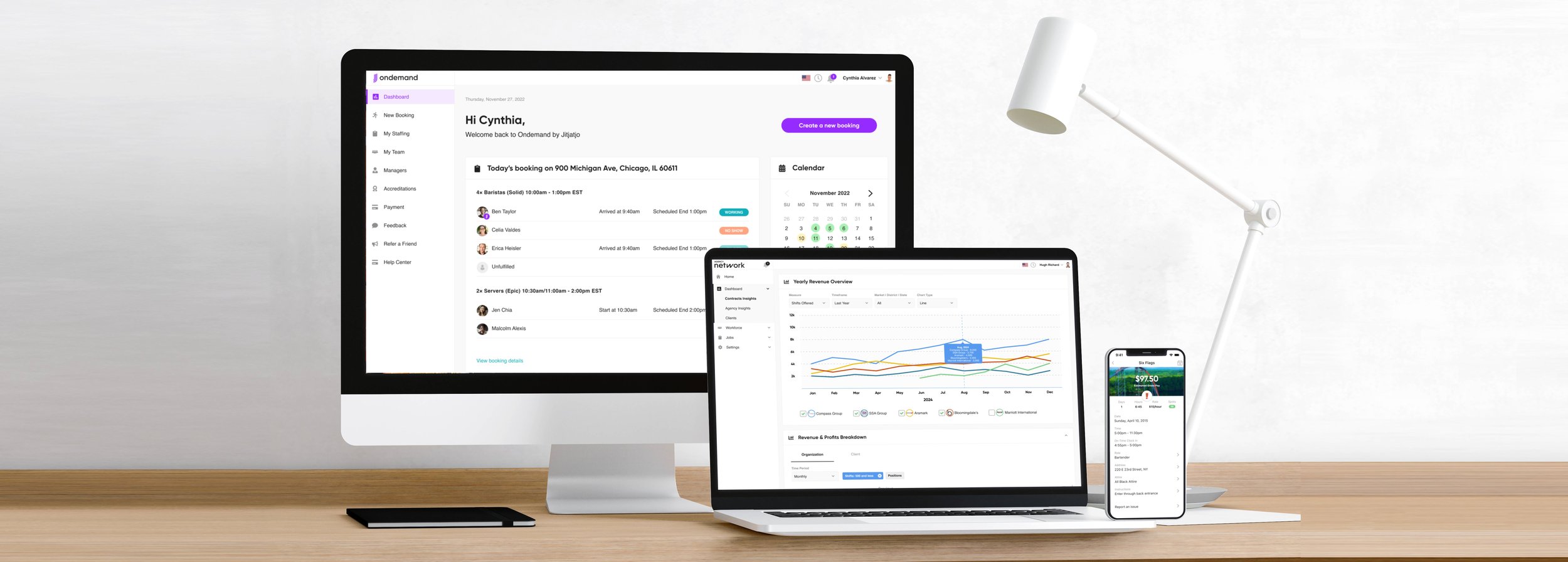
Flex Onboarding
Building the steps to onboarding workers
Overview
The Flex app is used by workers to receive invites for gigs and manage their shifts. Part of the Jitjatjo (JJJ) value proposition is its hiring of trustworthy gig workers looking for side hustles, entry level jobs or seasonal shifts. This was assured via an extensive on-boarding process for workers.
Design Process
The design process sought to getting something in front of users quickly and adapt along the way. This meant being flexible and agile in our design and move fast towards an end result.
But where to start…?
Speed versus assurance
It is a fine balance between speed and assurance. While the initial aim was to get workers on the platform as quickly as possible, applicants needed to demonstrably meet the quality and standards our clients were seeking.
So, a number of checks and balances were put in place for applicant to meet via a thorough online assessment process. This helped to work out who was genuine and weed out dodgy applicants. This would also give confidence to both the recruiters and the managers.
The flow
It made sense to break the relatively large number of steps required by the onboarding process into four core sections, and to allow applicants to come back to the process mid-way if needed.
1.
Profile
Positions
Experience
→
2.
Assessments
Accreditations
Interview
→
3.
Accept Offer
HR Forms
Background Check
→
4.
Policies
Availabily
Payout
Moving fast and breaking things meant we needed to leverage our direct client relationships as well as tools such as Intercom to collect and collate feedback to improve the design.
High fidelity prototype
I created an interactive Figma prototypes to articulate the flow for our key stake holders, product manager and developers to understand.
The following is a breakdown of some key elements through the on-boarding process
I would love to chat about the full process for each project with you, so please don’t hesitate to get in touch.
Visualising the breakdown of each section
To not overwhelm an applicant, the four separate processes were broken down into three steps respectively. As they made their way through the process, we included visual feedback to show that progress was being made.
The different level of safeguards
The different levels of safeguards that happened along the way, some more simple than others, such as having certain positions that required experience to be added so an admin could later review and approve.
Various skill assessments quizzes that were mandatory to complete based on their chosen positions.
The ability to add any accreditation’s that may be specific for certain roles, this would allow for increase chances to be booked on gigs that these accreditation’s were mandatory to accept.
3rd party tool integration
To keep the process entirely within the app, we were able to include third party tools such as calendly.com in order to schedule interviews. Direct HR W2 form integration once accepted. Background check progression and a Voluntary Self Identification Online Survey to be completed.
Choose Schedule
One of the main drivers for workers to join the platform was the flexibility to choose their preferred working hours, so a simple tap on feature worked well in delivering on that requirement.
At the end of the day
The challenge of this design was to accommodate a lot of information in a way that was not too cumbersome for onboarding workers, while instilling a sense of professionalism and reliability in Jitjatjo as a platform and for its recruiter clients. The functionality and presentation of the product was therefore integral to growing the reputation of Jitjatjo.









